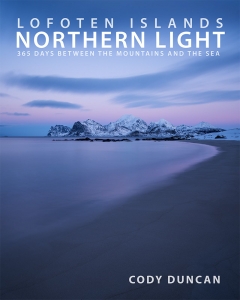Friday Photo #571 – Afternoon Blue Hour

Photo: December moon shines over Storsandnes beach, Flakstadøy, Lofoten Islands, Norway. December 7, 2022. 14:26
A nice bright moon shines over Storsandnes beach at blue hour. It looks like sometime in the evening, but on the Lofoten Islands in December, the is 14:26 is the afternoon. This image is taken one hour after last week’s image (Friday Photo #570), and there is quite a difference. Looking at the images for this article, I actually thought they had been taken on different days, not merely an hour apart.
Now a week into the polar night, if I were to shoot this image on today’s date, December 15, I would need to do so about a half hour earlier, so around 14:00. The polar night will continue to deepen for another week until the winter solstice next Friday, and which point the sun will have reached its lowest point below the (midday) southern horizon. The next time the day will have this equivalent light again is January 6, just as the sun crosses the horizon again. That’s enough numbers and dates for today.
I always like this blue hour light during winter. Even without the moon, on clear and cold days, there is a period where it seems as if the mountains are glowing from within. It is hard to photograph correctly, but if you are on Lofoten, it can seem as if the mountains get brighter as the light fades. I guess this technically just has to due with relative contrast of the white mountains against the deep blue sky, but it feels like a special light when it happens.
Head over to my Instagram account for (almost) daily postings of the local conditions here on Lofoten: @distant.north
Camera Info:
Nikon z8
Nikon 14-30mm f/4
25mm
ISO 100
f 11
1/5 Second
WB Daylight














